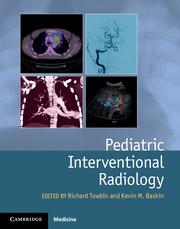4 - Abdominopelvic interventions
Published online by Cambridge University Press: 05 June 2015
Summary
Introduction
Patient problems in the abdomen and pelvis demand the fullest expression of clinical interventional radiology. From acute trauma to chronic renal failure, from solid organ biopsy to dilation of hollow viscera, from gastrojejunostomy tube exchange to transgastric drainage of a pancreatic pseudocyst, abdominopelvic interventional procedures can challenge practitioners on every level: intellectually, technically, emotionally, and ethically.
Virtually any problem in this region can be solved by distinctly different methods and with use of a variety of imaging approaches. For example, a pelvic fluid collection may be accessible from transrectal, transgluteal, or percutaneous access, using ultrasound, CT, or fluoroscopy, or a combination of multiple modalities. One may use a straight needle, a curved needle, or no needle at all (in the case of trocar access). These and many other choices are available to the interventionalist, and solutions must be individualized to each patient presentation.
Perhaps one of the most essential questions the interventional radiologist must answer is to what degree he or she will become integrated into the patient's total care. One can limit a practice to the provision of technical expertise in the performance of procedures on demand. It is our belief, professed throughout this text, that our involvement in patient care should ideally begin with consultation for assessment and planning at the time of initial presentation, and should end when the problem for which we have been consulted has been resolved, for problems that fall within our scope of practice, in a manner and by a process that is indistinguishable from any other procedure-based practitioner. It is to this end that this chapter is directed.
Gastrostomy and related procedures
Introduction
Adequate nutrition is essential for normal growth and development. In order for children with chronic illnesses or those who are unwilling or unable to take in adequate calories or essential nutrients to thrive, nutritional supplementation is necessary. In children with normal digestive function it is preferable to utilize the gastrointestinal (GI) tract for feeding to avoid hyperalimentation and its complications.
- Type
- Chapter
- Information
- Pediatric Interventional Radiology , pp. 151 - 249Publisher: Cambridge University PressPrint publication year: 2015



